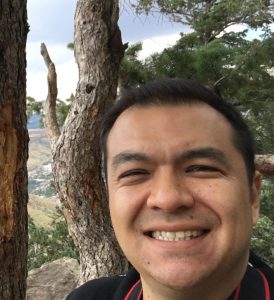 John Landa is a 3-year Student Challenge veteran, teaching computer science and game design at an all-girls school in Los Angeles. In 2020, John was the recipient of G4C’s Leadership Award, a distinct honor awarded to an outstanding program educator each year (check-out his acceptance video on the Challenge YouTube Channel).
John Landa is a 3-year Student Challenge veteran, teaching computer science and game design at an all-girls school in Los Angeles. In 2020, John was the recipient of G4C’s Leadership Award, a distinct honor awarded to an outstanding program educator each year (check-out his acceptance video on the Challenge YouTube Channel).
We recently caught-up with John to discuss his journey as a Challenge educator, experience navigating the shift to virtual learning, and the remarkable work produced by his game design students year after year.
For any educators interested in bringing game design to their students, John offers a few words of advice (keep reading for more!).
TEACHER: John Landa
TEACHER COHORT: Los Angeles
SCHOOL: Girls Academic Leadership Academy (GALA)
SUBJECT AREA: Computer Science
GRADE LEVEL TAUGHT: High School
YEARS PARTICIPATED IN THE PROGRAM: 3
Q: Are you a gamer? What is your favorite game?
A: That’s a really tough question. But if I had to narrow it down…When I was younger I used to play a lot of Street Fighter. I also went through a phase where I was playing a lot of Plants vs. Zombies. I kind of like those puzzle-type games the most.
Q: What made you decide to participate in the G4C Student Challenge?
A: A parent had come across the program and had emailed one of the teachers at the school. This was when I was about to start at GALA. That teacher had forwarded it to me and I thought it seemed really interesting.
Part of it is that I’ve always wanted to look for ways to bring social good into computer science. Before, when students were just making web pages, one of the options was to pick a cause they’re passionate about and make a web page about it or that has resources on how to help, things like that. So it just seemed like a natural fit when I saw it. I was like “hey, how do I figure out a way to incorporate that?” because it would be beneficial, and I also think the kids will really enjoy it.
Q: How did you incorporate the Challenge into your classroom?
A: We have an “Exploring Computer Science” 9th-grade class; there was already a unit on programming that uses Scratch, so I layered the game design pieces into that. And so students’ final project became making a game and they can submit to Games for Change!
Q: What type of a learning environment do you strive to create in your classroom?
A: In general, I want students collaborating; sharing ideas, and building off of each other’s ideas. I think that’s important. Not every student wants to work in a group…but I think it’s really cool when the students do form groups and they kind of split up the work…Maybe some of them want to do more on the animation and characters, others want to focus more on the actual programming. Or, we have some groups where it’s like “okay, I’m going to build this level, you’re going to build this level and we’ll try to combine our ideas later.”
Q: Was there a particular theme that resonated strongly with your students?
A: I definitely think it was the 2020 Human-Animal Bond theme. I think a lot of the students, especially if they have pets, already have that connection and they’re looking for ways to share that idea. They can feel the benefits of having a pet, so they wanted to try to communicate that to other people, “you can adopt a pet and you can feel the same way.”
I also think the [A Clean & Happy Earth theme] was another one that was really popular. Students recognize vaping is a big issue right now in high school. We’re always talking about the impact of what it’s going to do to your health and I think a lot of people say “that’s me, that’s my responsibility, to take care of me.” But I think it was interesting to look at the environmental impact…I think the kids really liked the idea of going a little more in-depth on that impact.
Q: How has this program changed the way you teach?
A: It’s definitely reinforced the idea that student choice is really powerful. Just because I, as a teacher, might like a subject and I would like to make a web page or a game about, doesn’t mean that the whole class wants to. So it’s good to give them choice and then you get to see that some students are just so passionate about one subject that they’ll really run with it. Lana [a student at GALA] loves biology and she looks for the theme that aligns with her interests, even though it may be different from what the majority of the class is doing. But then she gets really passionate about it and will spend all this extra time outside of class working on it. And to me, that’s amazing…She won her category for the last two years. As a 9th grader, she did the Automated Communities 2050 theme. I tell the 10th graders as an option that they can of course enter again into the contest. So she entered again this year and made a game about dyslexia and she won her category again!
*Check out Lana’s game, A Day With Dyslexia, winner of the Inclusive Play: Designing Games for All theme in Los Angeles.
Q: What has been the most challenging aspect of teaching this course?
A: COVID’s a layup answer here. The easy one. But I will tell you I was really impressed with the students. I wasn’t sure what kind of results we’d get…grades couldn’t go down from what you got the 3rd quarter. So kids really didn’t have to turn things in or complete stuff to maintain their grade if they already had a good grade. But I was just impressed with the way that the students stuck it out, and even students that were in groups managed to find a way to collaborate with their partners and they’re just really resourceful. So I’m just really proud of the way they stepped it up.
Q: What do you think helped keep them motivated to complete their game during virtual learning?
A: I think a lot of it is the buy-in. I think they feel that if they’re creating this game that is really for other people to play and learn, then that gives them a lot of ownership and buy-in. And I think that makes them not only want to complete it but to make it as good as it can be so they’re meeting the needs of those other people.
Q: Do you have any words of advice for other educators who are interested in joining the Challenge program, or in teaching game design more generally?
A: First off, DO IT. Maybe you have doubts. Because I always know as an educator, you feel like there are 10 million things on your plate, right? And it’s always a juggling act. But I think this is highly beneficial for the students, so it’s worth putting in the time. And even if you’re not an expert at programming or game design…the students will really run with things. When you tap into their passion they will say “okay, well maybe I don’t know how to do this in Scratch, but maybe I can figure it out.” And as a teacher, if you just provide kids those opportunities it gives them the space to rise up to these higher levels.
Check-out these games created by Mr. Landa’s students at the Girls Academic Leadership Academy for the 2020 G4C Student Challenge competition!

2020 High School Winner
Inclusive Play: Designing Games for All
Follow along and learn more about a person who is living with dyslexia.

2020 High School Finalist
A Clean & Happy Earth
Get your facts straight! Learn how to recycle and keep our planet clean.
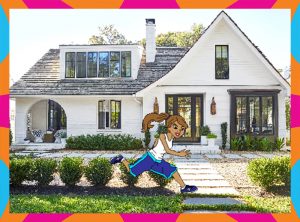
2020 High School Finalist
A Clean & Happy Earth
Jesse needs your help! In this adventure-style game, you’ll learn the importance of water conservation.
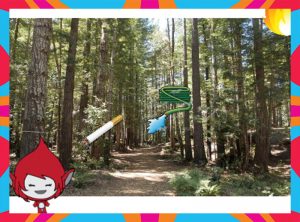
2020 High School Finalist
A Clean & Happy Earth
Cigarettes have caused wildfires across the world. Try to douse the flames in this game that increases in difficulty as you go.
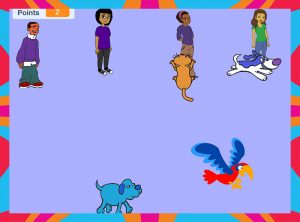
2020 High School Finalist
The Human-Animal Bond
Match each character with the animal best suited for their individual needs.
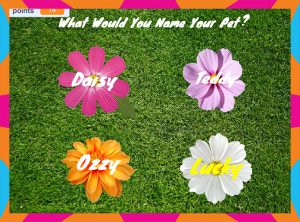
2020 High School Finalist
The Human-Animal Bond
Take this quiz to see which critter is the right fit for you. Like any good quiz, play again to see different results.

